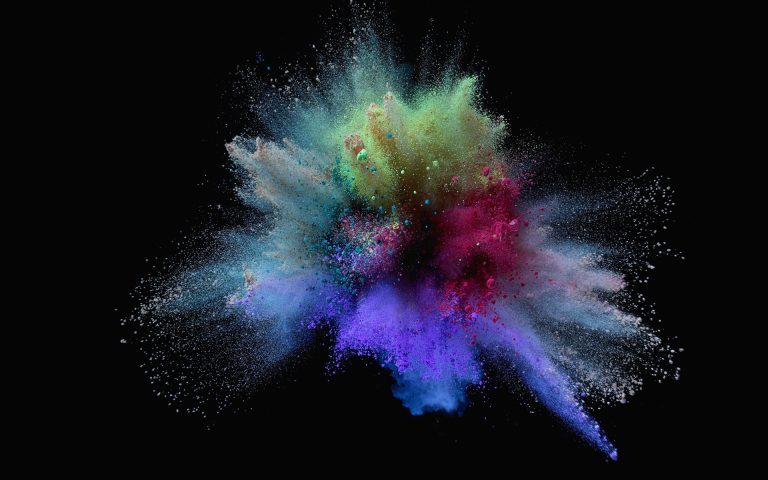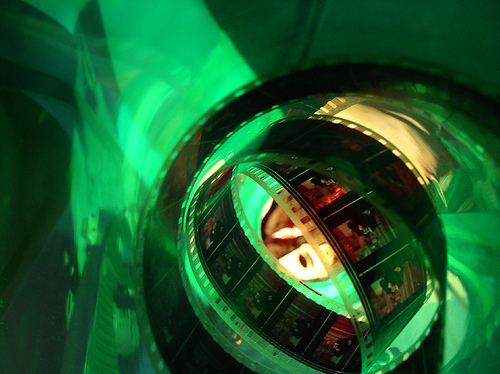Shapes to Shape Reaction in a Novel
Shapes are probably the last thing on a novelist’s mind when constructing a scene or an image system for a novel. Most of us probably pay little attention to shapes. Shapes of what? Well, everything has a shape, and even if you don’t think about shapes consciously, there are universal feelings that tend to go along with certain shapes, and throughout time and across cultures, shapes hold meaning and often symbolism.
The cross, for example, has a lot of religious symbolism connected to it. Using a cross in some fashion in a scene might imply many things, like religiousness, sacrifice, torture, or suffering. Bruce Block in his book The Visual Story says round shapes are “indirect, passive, romantic, organic, safe, and childlike,” whereas square shapes are “direct, industrial, unnatural, adult, rigid.” Triangles are “aggressive and dynamic.”
Going in Circles
Think about a character who feels stuck in a rut, her life like a treadmill. She feels as if she is going in circles, getting nowhere. Each morning she runs three miles on her treadmill. Her life is a merry-go-round of colorful painted horses that are not real. Without stating anything specifically, circles can be used in an image system throughout the novel. She could live at the end of a cul-de-sac with a circular driveway in front of her house. Her daughter could even have a pet hamster that runs in a hamster wheel, something she looks at every day and relates to. Her job could entail her doing some kind of repetitive motion that is circular (stirs sauces as a sous chef in a kitchen).
With her character arc, you could have her break out of that circular rut and make a beeline toward success (whatever that means for her). By the end of the novel she might move out of that house with its circular driveway, exchange the hamster for a horse or something that yells power and control, maybe even get a new job that feels “sharper,” more “in line” with her goal for the novel. You don’t have to explain any of this to the reader, but the subconscious effect and subtle symbolism will infuse more meaning into your story.
Sharp, Defining Shapes
What if your character has to make a decisive decision in the novel—something that the story builds heavily toward? He might see things not just in black and white around him but in sharp, angular shapes. Harsh light shining at the end of a dark alley where a door is illuminated can be symbolic, just as long corridors with numerous closed doors in even spacing can imply order and rigidity. Perhaps everything around him is rigid and sharp, and he is feeling forced into making a rigid decision that is either/or, and whatever decision he makes, someone will get hurt. There are no gray areas, soft places to retreat to. The world is cold and it cuts.
You can play with these types of ideas for your image systems by freewriting words: list emotions with objects, and see what shapes emerge. Filmmakers play with these concepts, so why not you?
Wrapping Up Image Systems
We’ve spent quite a few weeks taking a look at how filmmakers create image systems. Hopefully you are starting to see how there is so much more to shooting your novel than just picking appropriate camera shots to fashion each scene. As you write or rewrite your novel, run through these exercises:
-
Consider the core idea of your book. See if you can encapsulate it in a phrase or sentence. Write down words that reflect your image system. Think of how those words or ideas could be visually and symbolically portrayed throughout your novel
-
Consider how each shot in each scene will help support and convey your image system.
-
Ask what the main element of each shot is, what should or should not be included in the shot, and what meaning you want conveyed.
-
Think of a few emblematic shots you might use from time to time to tie in with your them and put them in your novel.
-
Rework or add a few scenes using a specific tilt of the camera for subconscious effect. Change the angle as the character changes.
- Choose one of two colors that have specific subliminal meanings and use them appropriately in your novel.
- Think where you might alter the quality of a color–either make it more vibrant or wash it out—from your POV character’s perspective to reflect their mood, self-image, or life situation.
- Think of some scenes that could benefit by bringing in specific shapes to act as symbols or motifs.
Are you starting to see your novel they way a filmmaker looks at a film? I hope so. And with all these new tools in your writers’ toolbox, you are well on your way to making your story visually profound and powerful.
This week, go over all the points listed above and try to incorporate them in your novel. When done, ask yourself how much better your scenes are. Feel free to share some thoughts about what you did and learned in the comments.












Excellent advice. If I can incorporate even just a few of these each day, I’ll have a best seller. Thank you.
I’ve just started visiting, always insightful and engaging. Thanks.
A valid and well-made point, and I liked your related article about use of color. But I would say there’s a warning to all this. Writing that is imbued with symbolism at every level or especially deep levels can feel unrealistic. You wonder, “What are the odds that someone whose life is going in circles just happens to have a hamster and a circular driveway?” The most extreme examples of this are evil characters who dress in black and have a name like “Dr. Satanus.”
As with everything, use in moderation.
Yes, I really overdid that whole “circular” bit to make a point. And your point is spot on. You don’t want to drill a thematic or emblematic element into the ground. Subtlety is great, but when using a motif, you want to bring it to the forefront at least 4-5 times in a novel. At least that is what feels right to me in my novels. Usually a motif or element is introduced near the beginning of the book, at the end, for sure. And then about 2-3 times for emphasis over the course of the novel. That way it shows up at key moments, and can pack a huge punch, whether it’s a visible image, symbol, word or phrase, or object.
Just referred back to this post and noticed your reply. That’s great that you’ve got a recommended amount for motif use. I’m just about to do a pass through a novel I’m working on and I will try this out.
It’s a bit like classical music which also has motives (little melodic bits that recur throughout the piece.) You want to familiarize listeners with them but you don’t want people saying, “oh geeze, there it is AGAIN!”
That’s a great observation. You can certainly overdo motifs, but I find writers don’t use them enough. My policy in all my novels is to come up with about five, for different characters and to use each one at least three to five times. Near the beginning, at the end, and a few sprinkled at key moments.